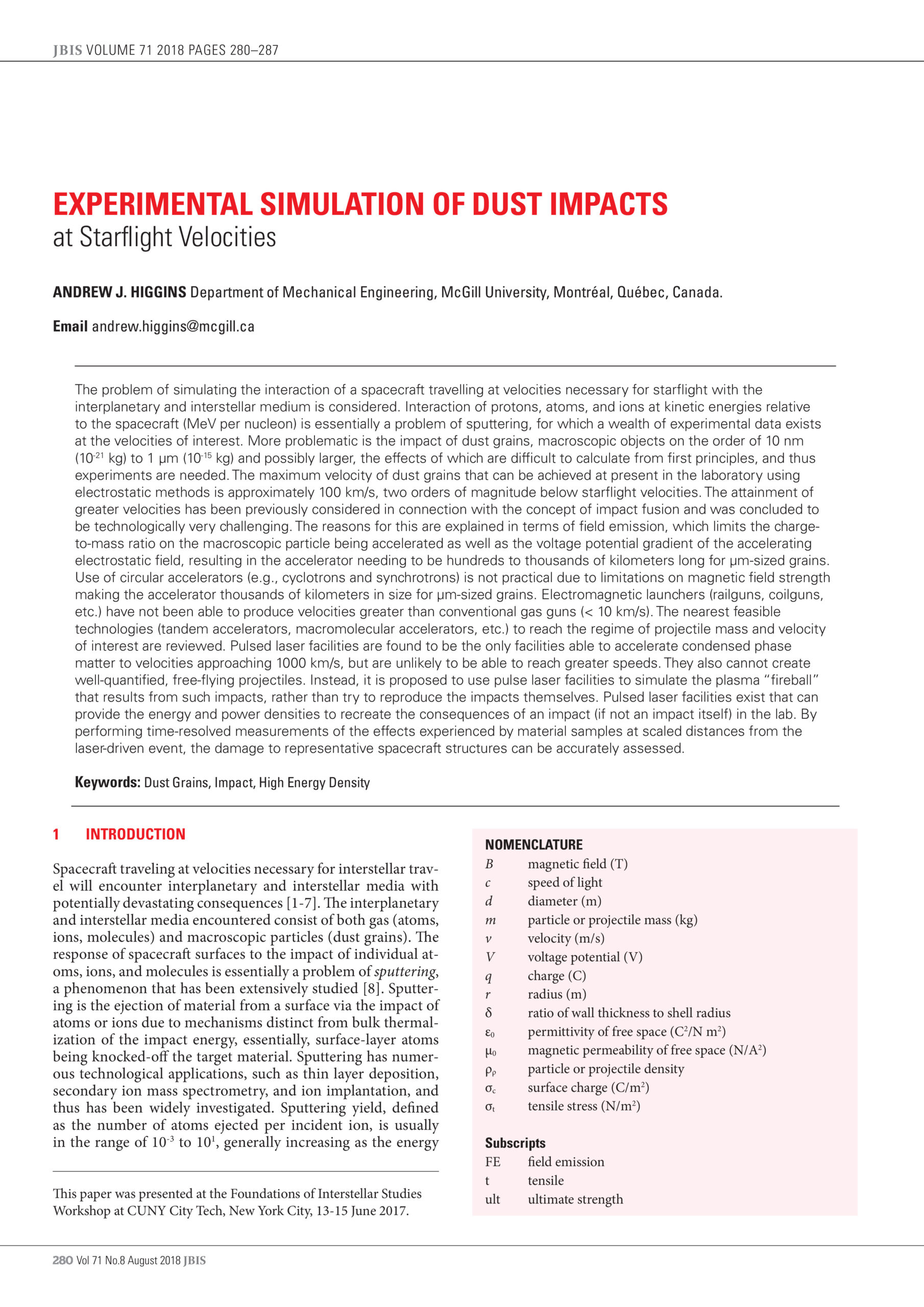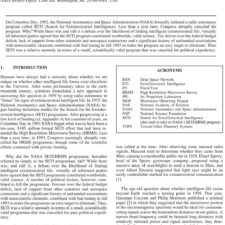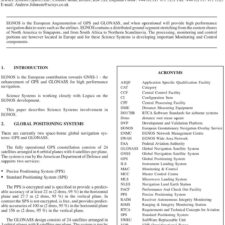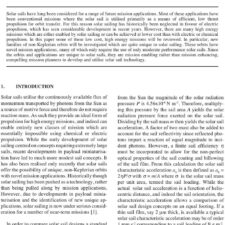Experimental Simulation of Dust Impacts at Starflight Velocities
£5.00
A. J. Higgins (2018), JBIS, 71, pp.280-287
Refcode: 2018.71.280
Keywords: Dust Grains, Impact, High Energy Density
Abstract:
The problem of simulating the interaction of a spacecraft travelling at velocities necessary for starflight with the interplanetary and interstellar medium is considered. Interaction of protons, atoms, and ions at kinetic energies relative to the spacecraft (MeV per nucleon) is essentially a problem of sputtering, for which a wealth of experimental data exists at the velocities of interest. More problematic is the impact of dust grains, macroscopic objects on the order of 10 nm (10-21 kg) to 1 μm (10-15 kg) and possibly larger, the effects of which are difficult to calculate from first principles, and thus experiments are needed. The maximum velocity of dust grains that can be achieved at present in the laboratory using electrostatic methods is approximately 100 km/s, two orders of magnitude below starflight velocities. The attainment of greater velocities has been previously considered in connection with the concept of impact fusion and was concluded to be technologically very challenging. The reasons for this are explained in terms of field emission, which limits the charge-to-mass ratio on the macroscopic particle being accelerated as well as the voltage potential gradient of the accelerating electrostatic field, resulting in the accelerator needing to be hundreds to thousands of kilometers long for μm-sized grains. Use of circular accelerators (e.g., cyclotrons and synchrotrons) is not practical due to limitations on magnetic field strength making the accelerator thousands of kilometers in size for μm-sized grains. Electromagnetic launchers (railguns, coilguns, etc.) have not been able to produce velocities greater than conventional gas guns (<10 km/s). The nearest feasible technologies (tandem accelerators, macromolecular accelerators, etc.) to reach the regime of projectile mass and velocity of interest are reviewed. Pulsed laser facilities are found to be the only facilities able to accelerate condensed phase matter to velocities approaching 1000 km/s, but are unlikely to be able to reach greater speeds. They also cannot create well-quantified, free-flying projectiles. Instead, it is proposed to use pulse laser facilities to simulate the plasma “fireball” that results from such impacts, rather than try to reproduce the impacts themselves. Pulsed laser facilities exist that can provide the energy and power densities to recreate the consequences of an impact (if not an impact itself) in the lab. By performing time-resolved measurements of the effects experienced by material samples at scaled distances from the laser-driven event, the damage to representative spacecraft structures can be accurately assessed.





